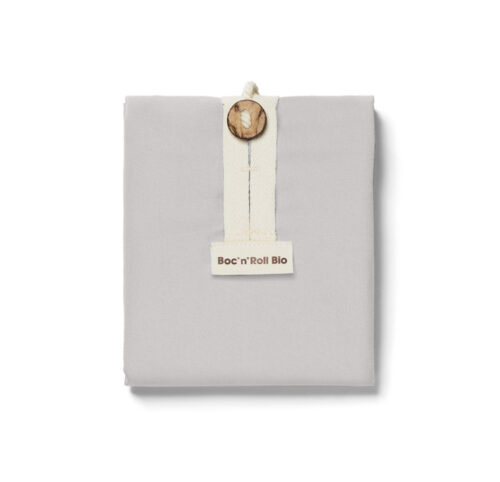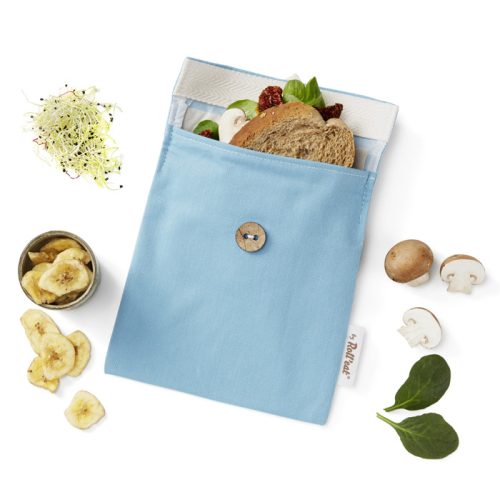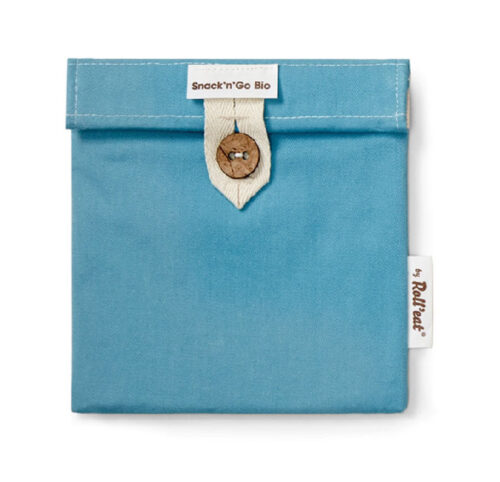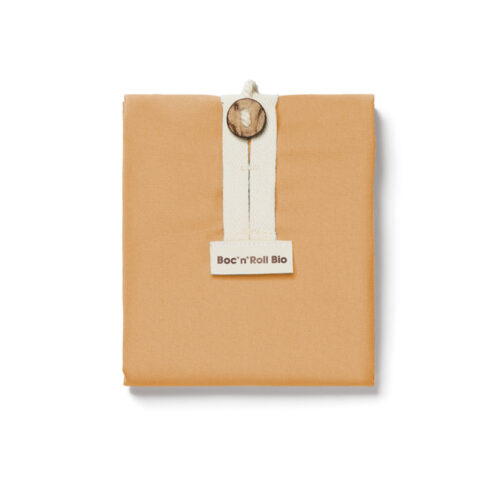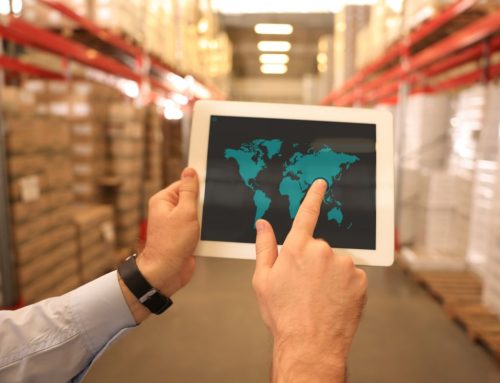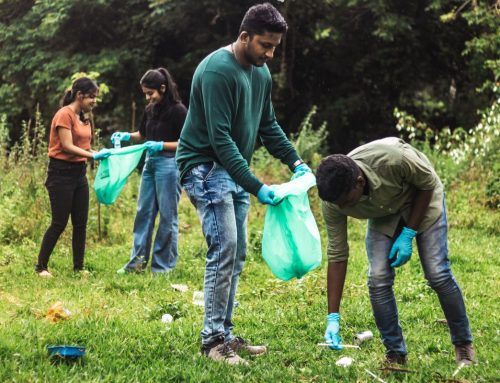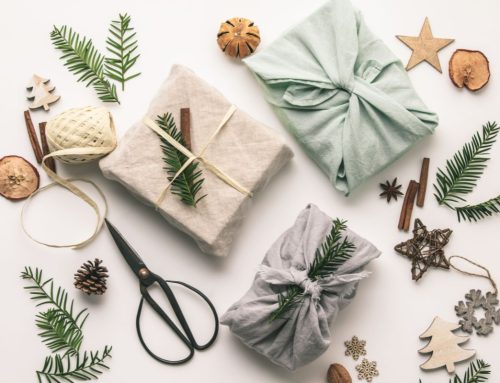A zero-waste gift refers to a thoughtful present that minimizes or eliminates waste throughout its lifecycle. It embodies the principles of sustainability and conscious consumption by focusing on reducing environmental impact.
These gifts are designed to avoid single-use plastics, excess packaging, and disposable items that contribute to landfill waste. They often include reusable, long-lasting, or compostable products, encouraging the recipient to adopt eco-friendly habits.
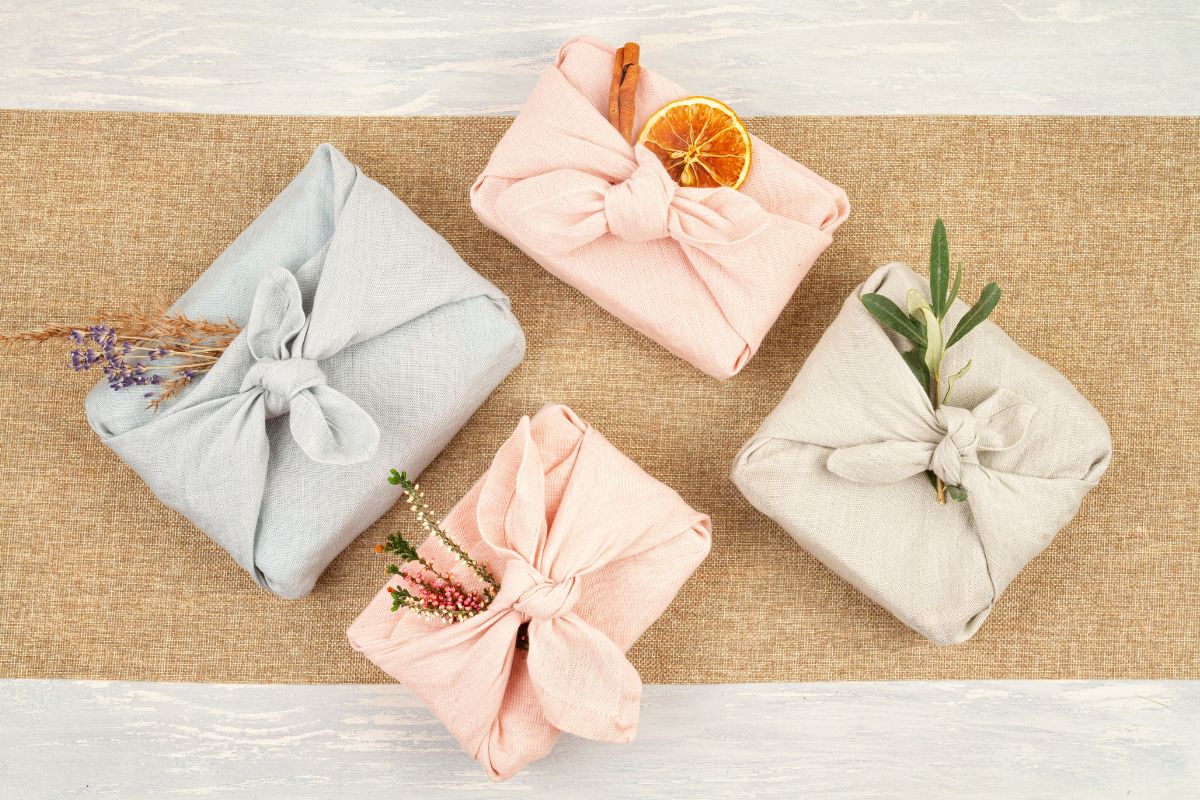
30 ideas for a zero-waste gift
Zero-waste gifts can encompass a wide range of options, from reusable stainless steel water bottles, cloth tote bags, and reusable food wraps to experiences, such as cooking classes, workshops, or donations made in the recipient’s name to environmental causes. The essence of a zero-waste gift lies in promoting sustainability, inspiring mindful living, and advocating for a healthier planet by fostering a culture of reuse, repurpose, and waste reduction.
1. Homemade Candles
Homemade candles offer a myriad of benefits, from customization to using natural ingredients. Crafting your own candles allows for personalized scents, colors, and designs, catering to individual preferences. Additionally, it’s a cost-effective alternative to store-bought candles.
To make homemade candles, gather supplies like wax (soy, beeswax, or paraffin), wicks, fragrance oils, and colorants.
Melt the wax in a double boiler, add color and fragrance, then pour it into containers with wicks secured at the center. Allow them to cool and solidify.
Experiment with essential oils for aromatherapy benefits or incorporate dried herbs for added aesthetic appeal.
Homemade candles not only provide a cozy ambiance but also serve as thoughtful gifts, promoting relaxation and personal well-being through their soothing glow and aromatic qualities.
2. Reusable wrappers
Reusable wrappers, like the Boc’n’Roll, reusable sandwich wrapper, or Snack’n’Go, reusable snack bag, provide a sustainable solution to single-use plastic wraps. These eco-friendly alternatives significantly reduce waste by replacing disposable cling films.
Their washable and reusable nature cuts down on landfill waste and minimizes the environmental footprint. Versatile in application, these wrappers conform to various containers and food items, effectively preserving freshness and preventing food waste.
Their flexibility allows you to easily fold them and keep food securely stored without the need for single-use plastics. By opting for reusable wrappers, individuals actively participate in reducing plastic pollution while embracing a more eco-conscious approach to food storage, contributing positively to a greener and more sustainable future.
3. Handcrafted Soap
Handcrafted soap offers numerous benefits, including skin-nourishing ingredients and customization options.
Making your own soap allows control over the ingredients, avoiding harsh chemicals and incorporating natural oils like coconut, olive, or shea butter for added moisture.
To craft handcrafted soap, gather essential materials like lye, oils, water, and fragrances or essential oils.
Start by carefully mixing the lye with water, then blend it with melted oils to initiate the saponification process. Add scents and colors as desired, then pour the mixture into molds and allow it to cure for several weeks.
Handcrafted soap not only cleanses effectively but also meets specific skin need, such as sensitive or dry skin, and can be customized with various scents and textures, promoting a luxurious and personalized bathing experience.
4. Upcycled Tote Bags
Upcycled tote bags offer a sustainable and stylish alternative to conventional bags, contributing positively to the environment. Crafted from repurposed materials like fabrics, old clothing, or discarded textiles, these bags reduce waste by giving a new life to items that might otherwise end up in landfills.
Their eco-friendly nature minimizes the demand for new resources and lessens the environmental impact associated with manufacturing new products. Beyond sustainability, upcycled tote bags boast unique designs and textures, providing a one-of-a-kind fashion statement.
They are versatile, durable, and often handcrafted, showcasing creativity while promoting a greener lifestyle.
Choosing upcycled tote bags supports sustainable practices, encourages creative reuse of materials, and allows individuals to make an eco-conscious fashion statement, embodying both style and environmental responsibility.
5. Herbal Tea Blends
Herbal tea blends offer diverse flavors and health benefits, crafted from various dried herbs, flowers, fruits, and spices. Creating your own herbal tea allows customization to suit taste preferences and health needs.
To make a blend, select dried ingredients like chamomile, peppermint, lavender, or hibiscus, combining them in desired proportions. Experiment with flavors, mixing herbs for unique taste profiles or for specific health benefits such as relaxation, digestion, or boosting immunity.
Blend the ingredients thoroughly and store them in airtight containers away from light and moisture. When brewing, steep the herbal blend in hot water for a recommended time to extract flavors and health properties.
Homemade herbal tea blends offer a delightful, personalized beverage experience, promoting wellness through natural ingredients and enticing flavors.
6. Reusable Makeup Remover Pads
Reusable makeup remover pads present numerous advantages, primarily in reducing waste and promoting sustainability. Made from materials like cotton, bamboo, or microfiber, these pads offer a planet-friendly alternative to single-use cotton pads.
Their reusable nature decreases environmental impact by cutting down on disposable waste, conserving resources, and minimizing the carbon footprint associated with constant disposables.
Additionally, they are gentle on the skin, often being soft and hypoallergenic, suitable for various skin types. Easy to clean by either hand or machine washing, these pads are cost-effective in the long run, providing a sustainable and economic solution.
By opting for reusable makeup remover pads, individuals contribute positively to environmental conservation while enjoying an effective and skin-friendly makeup removal routine.
7. Succulent or Herb Gardens
Succulent and herb gardens offer multifaceted benefits, combining aesthetics, practicality, and sustainability.
Succulents require minimal maintenance, thriving in various environments and adding natural charm to indoor or outdoor spaces. Herbs, on the other hand, provide fresh flavors for culinary delights and possess medicinal properties.
To create a succulent garden, select a well-draining potting mix and containers with drainage holes. For herb gardens, choose a sunny location, plant in well-drained soil, and ensure regular watering.
Incorporating succulents or herbs not only enhances the visual appeal of spaces but also promotes sustainability by cultivating plants that require less water and maintenance.
These gardens provide readily available fresh herbs for cooking and contribute to indoor air purification, fostering a greener and healthier living environment.
8. Hand-knitted or Crocheted Scarves
Hand-knitted or crocheted scarves offer a blend of warmth, style, and creativity. Crafting these scarves by hand allows for customization in colors, patterns, and textures, ensuring a unique accessory suited to personal preferences.
To create a hand-knitted scarf, gather yarn of choice, appropriate needles, and follow a chosen knitting pattern. Crocheted scarves involve yarn and crochet hooks, using various stitches to form intricate designs.
These handmade creations not only provide warmth during colder seasons but also serve as thoughtful gifts, showcasing the maker’s skill and care. Moreover, the act of knitting or crocheting promotes relaxation and mindfulness, offering therapeutic benefits.
Handcrafted scarves encourage creativity, allow for self-expression, and result in a practical and stylish accessory that holds sentimental value, representing dedication and craftsmanship.
9. Homemade Body Scrubs
Homemade body scrubs offer a natural and luxurious way to exfoliate and nourish the skin. Crafting your own scrub allows control over ingredients, avoiding harsh chemicals commonly found in commercial products.
To create a homemade scrub, combine natural exfoliants like sugar, salt, or ground coffee with moisturizing agents such as coconut oil, olive oil, or honey.
Optionally, add essential oils for fragrance and additional skin benefits. Gently massage the scrub onto damp skin in circular motions, then rinse thoroughly.
These DIY scrubs effectively remove dead skin cells, revealing smoother, softer skin while promoting blood circulation and skin rejuvenation.
They’re cost-effective, customizable to individual skin needs, and environmentally friendly, minimizing packaging waste. Homemade body scrubs offer a spa-like experience at home, leaving skin refreshed, revitalized, and beautifully radiant.
10. Hand-painted Ceramic Mugs
Homemade body scrubs offer a natural and luxurious way to exfoliate and nourish the skin. Crafting your own scrub allows control over ingredients, avoiding harsh chemicals commonly found in commercial products.
To create a homemade scrub, combine natural exfoliants like sugar, salt, or ground coffee with moisturizing agents such as coconut oil, olive oil, or honey. Optionally, add essential oils for fragrance and additional skin benefits. Gently massage the scrub onto damp skin in circular motions, then rinse thoroughly.
These DIY scrubs effectively remove dead skin cells, revealing smoother, softer skin while promoting blood circulation and skin rejuvenation. They’re cost-effective, customizable to individual skin needs, and environmentally friendly, minimizing packaging waste.
Homemade body scrubs offer a spa-like experience at home, leaving skin refreshed, revitalized, and beautifully radiant.
11. Homemade Granola or Cookies
Homemade granola or cookies offer delightful flavors, customizable ingredients, and healthier alternatives to store-bought options.
Crafting these treats at home allows control over sugar content, opting for natural sweeteners like honey or maple syrup. To make granola, combine oats, nuts, seeds, dried fruits, and a binding agent like coconut oil or nut butter. Bake until golden brown for a crunchy, nutritious snack or breakfast topper.
For cookies, mix flour, oats, butter, sugars, and add-ins like chocolate chips or nuts. Shape into cookies and bake until golden for a homemade indulgence. These homemade treats are free from preservatives, offering a fresher taste and the ability to tailor ingredients to dietary preferences.
Additionally, they’re perfect for on-the-go snacking or as thoughtful homemade gifts, promoting a healthier and more satisfying snack option.
12. Knitted Dishcloths
Knitted dishcloths present a blend of practicality, sustainability, and creativity in the kitchen. Handcrafted from cotton or linen yarn, these dishcloths offer excellent absorbency, durability, and reusability, making them a sustainable alternative to disposable cleaning cloths.
To create knitted dishcloths, choose suitable yarn and knitting needles. Start with basic knitting stitches like garter stitch or stockinette stitch, casting on an appropriate number of stitches for desired size. Knit rows until reaching the desired length, then bind off stitches.
These dishcloths are machine washable, making them easy to clean and reuse, reducing waste and environmental impact. They not only efficiently tackle kitchen messes but also serve as charming, customizable additions to the home, showcasing craftsmanship while promoting eco-consciousness in daily routines.
13. Customized Reusable Water Bottles
Customized reusable water bottles offer a combination of personalization and sustainability. By opting for a custom-designed bottle, individuals express their unique style while reducing single-use plastic consumption.
These bottles, often made from durable materials like stainless steel or BPA-free plastic, provide a long-lasting hydration solution. Customization options include choosing colors, adding personalized logos, names, or images, making them ideal for gifts or promotional items.
Additionally, they encourage hydration habits, promoting the use of environmentally friendly alternatives to disposable bottles. The versatility and eco-consciousness of customized reusable water bottles contribute to a reduction in plastic waste, supporting a greener lifestyle while showcasing individuality through a practical, everyday accessory.
14. DIY Beeswax Wood Polish
Beeswax wood polish offers natural, protective benefits for wooden surfaces, providing a lustrous finish and preserving their quality.
To make beeswax wood polish, start by combining grated beeswax with a carrier oil like olive, coconut, or jojoba oil in a double boiler. Heat gently until the beeswax melts and mixes thoroughly with the oil.
For added fragrance or additional nourishing properties, include a few drops of essential oils like lemon, lavender, or cedarwood. Once blended, let the mixture cool and solidify before use.
To apply, use a soft cloth or brush to spread a thin layer of the polish onto the wood surface, allowing it to penetrate and dry. Buff gently with a clean cloth to achieve a beautiful sheen and protective layer, enhancing the wood’s natural beauty while safeguarding it from moisture and wear.
15. Macramé Plant Hangers
Macramé plant hangers serve as both functional and aesthetic pieces, providing an elegant way to showcase indoor plants while saving space. Crafting a macramé plant hanger involves knotting cords into intricate patterns.
To make one, gather sturdy cord or rope, a metal or wooden ring, and a potted plant. Start by cutting cords to desired lengths, then fold them to create a loop at the top, securing them to the ring with knots.
Proceed with various knots like the square knot, alternating square knot, or half-square knot to fashion a decorative pattern. Finally, create a cradle or basket-shaped structure to hold the plant pot securely.
These hangers add a bohemian touch to interiors, elevating greenery and creating an eye-catching display while maximizing vertical space, making them a stylish and functional home decor accessory.
16. DIY Seed Bombs
Seed bombs offer an innovative and eco-friendly way to propagate plants, promoting biodiversity and beautifying spaces.
To make seed bombs, combine clay, compost, and seeds of native plants or flowers. Blend these ingredients thoroughly and form small balls or shapes. Allow them to dry completely.
When thrown or placed in appropriate outdoor areas, like barren patches or gardens, these seed bombs break down with rain or watering, allowing the seeds to germinate and grow. They aid in rewilding areas, supporting pollinators, and enhancing green spaces.
Seed bombs serve as a fun and effective method to encourage plant growth while contributing to environmental conservation. They’re a simple yet impactful way for individuals to participate in reforestation efforts and foster greener, more vibrant surroundings.
17. Homemade Natural Lip Balms
Homemade natural lip balms offer nourishing benefits and a customizable solution for dry or chapped lips. Creating your own lip balm allows control over ingredients, ensuring the use of natural, skin-friendly components.
To make one, gather beeswax, shea butter, coconut oil, and essential oils like lavender or peppermint for fragrance. Melt beeswax, shea butter, and coconut oil in a double boiler, stirring gently. Remove from heat, add a few drops of essential oil, then pour the mixture into lip balm containers. Let them cool and solidify.
These DIY lip balms provide deep hydration, protection against environmental elements, and soothing relief for dry lips. Free from synthetic additives or harsh chemicals, homemade lip balms offer a nourishing solution, promoting soft, supple lips while avoiding potentially harmful ingredients found in commercial products.
18. Upcycled Fabric Coasters
Upcycled fabric coasters provide an eco-friendly and creative way to repurpose materials while serving a practical function.
To craft these coasters, gather fabric scraps or old clothing items that can be repurposed. Cut the fabric into desired coaster shapes, such as squares or circles. Layer two pieces of fabric with the decorative sides facing outwards and sew around the edges, leaving a small opening. Turn the coaster inside out through the opening and fill it with stuffing material or an absorbent layer if preferred. Finally, hand-stitch the opening closed.
Upcycled fabric coasters not only prevent water rings but also offer a unique and personalized touch to home decor.
By creatively reusing materials that might otherwise be discarded, these coasters contribute to reducing waste while adding character to living spaces.
19. Handmade Upcycled Jewelry
Handmade upcycled jewelry embodies creativity and sustainability, repurposing materials into unique adornments.
To create upcycled jewelry, gather old or unused items like buttons, beads, fabric scraps, or broken jewelry pieces. Transform these materials into stunning accessories by stringing beads onto wire or thread, arranging buttons into pendants, or pairing different elements to form earrings or bracelets.
Use pliers, wires, or glue to assemble the pieces into desired designs. Upcycled jewelry allows for endless customization and unique styles, showcasing individuality while reducing waste.
Crafting jewelry from repurposed items not only offers one-of-a-kind accessories but also contributes to environmental conservation by giving new life to discarded materials.
These handmade pieces make meaningful gifts and serve as a reminder of creativity and sustainability in fashion.
20. DIY Cloth Napkins
DIY cloth napkins offer an eco-friendly alternative to disposable paper napkins, reducing waste while adding a touch of charm to dining experiences.
To create cloth napkins, choose a fabric of preference, such as cotton, linen, or a blend, in desired colors or patterns. Cut the fabric into squares or rectangles of suitable size, typically around 12 to 18 inches. Fold and press the edges twice to create clean hems, then sew them securely.
These reusable napkins are durable, washable, and perfect for everyday use or special occasions.
By making cloth napkins, you minimize single-use waste, saving money in the long run, and contributing to a more sustainable household. They’re customizable, allowing for a personal touch on table settings while promoting an eco-conscious approach to dining.
21. Customized Reusable Shopping Bags
Customized reusable shopping bags offer a blend of personalization and sustainability, reducing the environmental impact of single-use plastic bags.
Creating personalized bags involves selecting durable materials like canvas or recycled fabrics, then customizing them with stencils, fabric paint, or embroidery to reflect individual styles or messages.
These bags are sturdy, washable, and spacious, ideal for grocery shopping or daily use. They reduce plastic waste and contribute to a greener lifestyle by minimizing disposable bag usage.
Moreover, customizing these bags provides a creative outlet, showcasing unique designs while promoting eco-consciousness. By opting for personalized reusable shopping bags, individuals not only reduce their carbon footprint but also express individuality through a practical and environmentally friendly accessory.
22. Hand-poured Soy Candles
Hand-poured soy candles offer a natural and eco-friendly alternative to traditional paraffin candles, providing numerous benefits.
To create these candles, start by melting soy wax flakes in a double boiler. Add desired fragrance oils or essential oils for scent and colorants if preferred, ensuring they’re suitable for candle making.
Prepare candle containers by securing wicks at the center, then carefully pour the melted wax into the containers. Allow the candles to cool and solidify.
Soy candles burn cleaner and longer than paraffin, emitting fewer toxins and soot, making them safer for indoor air quality. They also have a slower burn rate, extending their lifespan.
Additionally, soy wax is biodegradable and renewable, supporting sustainable practices. Hand-poured soy candles offer a natural ambiance and pleasant aromas while contributing to a healthier environment.
23. Repurposed Bookmarks
Repurposed bookmarks offer a creative way to give new life to old or unused materials while fostering a love for reading.
To create them, repurpose items like decorative paper scraps, fabric remnants, or even old cards and photos. Cut these materials into bookmark-sized strips, typically 2 inches wide and 6 inches long. Add personal touches by decorating with stamps, drawings, or quotes. Laminate the bookmarks for durability or use clear adhesive film to protect them.
Repurposed bookmarks not only keep your place in a book but also serve as unique, personalized keepsakes or thoughtful gifts. Making bookmarks from recycled materials promotes sustainability and encourages appreciation for both crafting and reading.
It’s an enjoyable way to repurpose items that might otherwise be discarded, adding a touch of individuality to reading adventures.
24. DIY Upcycled T-Shirt Tote Bags
DIY upcycled t-shirt tote bags offer an eco-friendly and stylish alternative to plastic bags, repurposing old shirts into functional accessories.
To make these tote bags, start by selecting a clean t-shirt without prominent side seams. Cut off the sleeves and neckline, leaving the main body intact. Turn the shirt inside out and sew the bottom hem shut to create a sturdy base. Optionally, reinforce the handles by cutting strips along the top and braiding or knotting them. Flip the shirt right side out, and your upcycled tote bag is ready to use!
These bags reduce waste by giving new life to old clothing while providing a lightweight and versatile way to carry groceries, books, or everyday essentials.
They’re customizable, environmentally friendly, and make a creative statement about sustainable living.
25. Handmade Recycled Paper Stationery
Handmade recycled paper stationery offers a sustainable and artistic way to reduce waste while crafting personalized writing materials.
To create recycled paper, start by shredding used paper, such as newspapers or scrap paper, into small pieces. Soak the paper bits in water overnight. Blend the soaked paper into a pulp, then strain it through a mesh to remove excess water.
Spread the pulp thinly on a cloth or screen and press it to remove remaining moisture. Let it dry completely. Once dry, cut the paper into desired sizes for stationery, such as cards or letterheads.
Handmade recycled paper stationery not only showcases individuality but also promotes environmental consciousness by reusing materials that might otherwise end up in landfills.
These unique pieces add a personal touch to correspondence while advocating for sustainable practices.
26. Zero-Waste Meal Prep Kits
Zero-waste meal prep kits offer a sustainable solution to reduce single-use packaging while encouraging mindful eating habits.
To create these kits, opt for reusable containers like glass jars, stainless steel containers, or reusable snack bags, like the Snack’n’Go. Divide ingredients into portions for planned meals, using bulk or package-free items to minimize waste.
Include reusable cutlery, cloth napkins, and eco-friendly utensils to complete the kit. Planning meals ahead reduces food waste, while reusable containers eliminate the need for disposable packaging. These kits streamline meal preparation, making it convenient to carry homemade meals, snacks, or leftovers without generating excess waste.
By assembling zero-waste meal prep kits, individuals contribute to a more sustainable lifestyle, promoting healthier eating choices while minimizing environmental impact.
27. Homemade Fabric Bowl Covers
Homemade fabric bowl covers offer a sustainable and reusable alternative to plastic wrap or foil for storing food.
To make these covers, select fabric scraps or cloth squares larger than the bowls to be covered. Cut the fabric into circles or squares, adding an extra inch or two to accommodate the bowl’s size. Hem the edges or use elastic bands to secure the fabric around the bowl, creating a snug fit.
These covers are washable, allowing for multiple uses, reducing plastic waste, and keeping food fresh. They’re versatile, perfect for covering leftovers, dough rising in bowls, or protecting food from insects during outdoor gatherings.
Homemade fabric bowl covers not only add a charming touch to kitchen storage but also promote eco-friendly habits by eliminating the need for disposable wraps.
28. DIY Herb Infused Oils or Vinegars
DIY herb-infused oils or vinegars offer flavorful culinary enhancements and health benefits.
To create herb-infused oils, select fresh herbs like rosemary, thyme, or basil, and place them in a sterilized glass jar. Pour olive oil over the herbs, ensuring they’re completely submerged. Seal the jar and store it in a cool, dark place for a few weeks to infuse the flavors.
For herb-infused vinegars, place fresh herbs in a sterilized glass bottle, then fill it with vinegar such as white wine or apple cider vinegar. Seal and let it infuse for several weeks in a cool, dark place.
These homemade infusions add depth to salad dressings, marinades, or cooking, providing a natural and flavorful touch to dishes while incorporating the health benefits of herbs into culinary creations.
29. Reusable Cloth Pads or Menstrual Cups
Reusable cloth pads and menstrual cups offer eco-friendly, cost-effective, and sustainable alternatives to disposable menstrual products.
To make reusable cloth pads, select absorbent fabrics like cotton or bamboo, cut them into pad shapes, layering for added absorption, and sew them together. These pads are washable, reducing waste and saving money over time while providing comfort and reducing exposure to chemicals found in disposable pads.
Menstrual cups, made from medical-grade silicone or rubber, are reusable and offer a longer-term solution. To use, fold and insert the cup into the vagina, where it collects menstrual blood and can be emptied, cleaned, and reused.
Both options promote a more environmentally conscious approach to menstruation, reducing the environmental impact of single-use menstrual products while providing a reliable and sustainable alternative.
30. Natural deodorant
Natural deodorants offer an alternative to conventional antiperspirants, avoiding potentially harmful chemicals while effectively controlling odor.
Making natural deodorant involves combining ingredients like coconut oil, baking soda, arrowroot powder, and essential oils known for their antibacterial properties. Mix these ingredients to create a paste-like consistency. Coconut oil acts as a moisturizer, while baking soda and arrowroot powder absorb moisture and neutralize odor. Essential oils provide fragrance and additional antibacterial benefits. Store the mixture in a clean container.
To apply, use a small amount to cover the underarms. Natural deodorants are free from aluminum and synthetic fragrances, reducing the risk of skin irritation and allowing the body to perspire naturally.
By opting for natural ingredients, individuals embrace a healthier and more skin-friendly approach to odor control while promoting eco-conscious choices.
Handmade zero-waste gifts
Handmade gifts are expressions of creativity, thoughtfulness, and personal care. Crafting a handmade gift involves investing time, skill, and heart into creating something unique and special for a loved one. Whether it’s a knitted scarf, a hand-painted mug, a homemade candle, or a piece of artwork, these gifts carry a sense of authenticity and individuality.
They reflect the giver’s dedication and affection, making them meaningful and cherished by the recipient. Handmade gifts go beyond material value; they encapsulate sentiments, memories, and the joy of creating something with personal attention, ensuring a heartfelt connection between the giver and receiver.
Buy zero-waste gifts
Buying gifts is a thoughtful gesture that allows us to express appreciation, gratitude, and love for others on special occasions or simply to show we care. It involves carefully considering the recipient’s preferences, interests, and needs, aiming to select a present that will resonate with them.
The act of purchasing a gift involves exploring various options, whether online or in stores, to find something meaningful and fitting. It’s an opportunity to explore diverse choices, from practical items that serve a purpose to unique and personalized tokens that evoke joy and appreciation.
When to give gifts
Gift-giving occasions can vary widely, but here are some common occasions when gifts are often given:
- Holidays: Celebrations like Christmas, Hanukkah, Eid, Diwali, and other cultural or religious holidays are prime times for gift-giving.
- Birthdays: An individual’s birthday is a personal occasion where friends and family often give gifts to commemorate their special day.
- Anniversaries: Whether it’s a wedding anniversary, dating anniversary, or work-related milestones, giving gifts is a way to honor and celebrate these occasions.
- Graduations: Upon completing a significant educational milestone, gifts are often given to celebrate and recognize the achievement.
- Weddings: Gifts are customary for couples starting their new life together, with wedding registries often guiding guests in their choices.
- Baby Showers: Before the arrival of a new baby, loved ones often give gifts to support and celebrate the parents-to-be.
- Housewarmings: When someone moves into a new home, it’s common to bring a gift to congratulate them and help make their new space feel welcoming.
- Thank You: Gifts can be given as a token of appreciation for someone’s kindness, support, or help during a difficult time or in recognition of their ongoing support.
You can take advantage of these and many other occasions to show your love for your loved ones and do it in a sustainable and environmentally responsible way.
Choose now between all the ideas we have given you and give a zero-waste gift.


